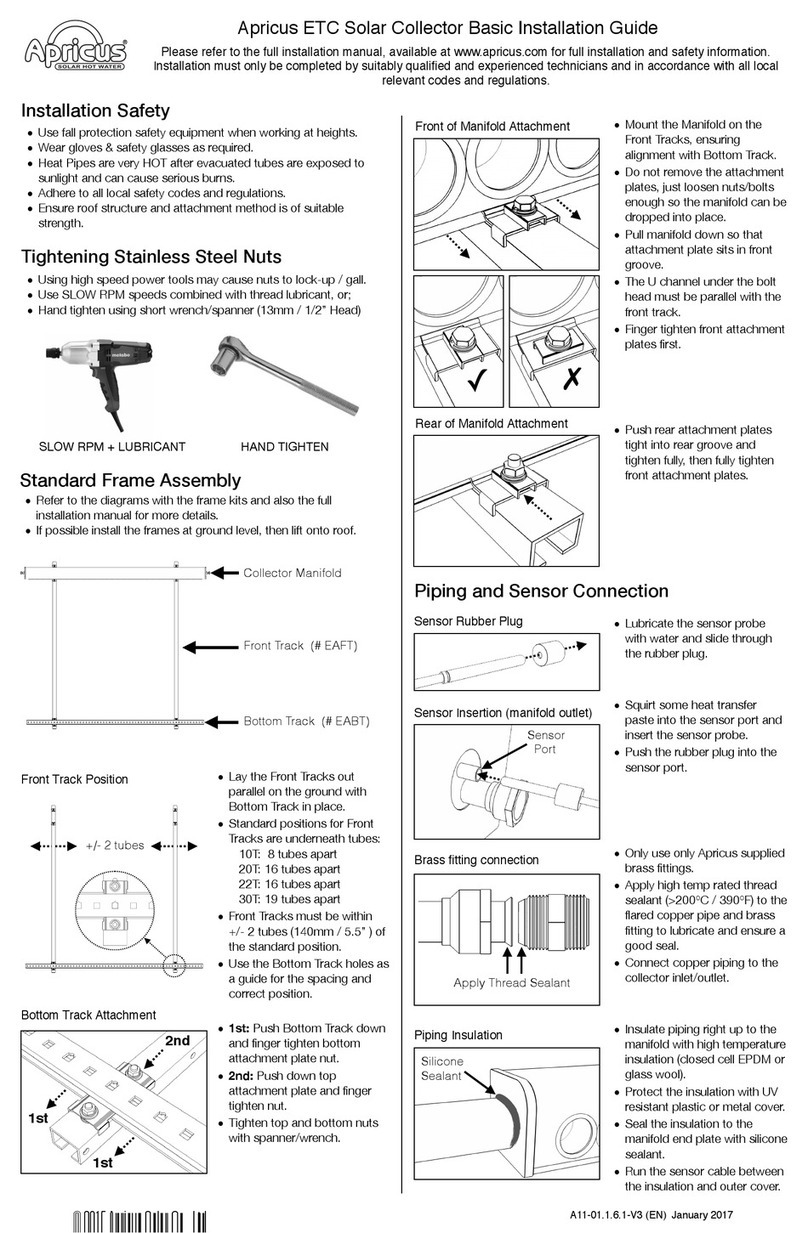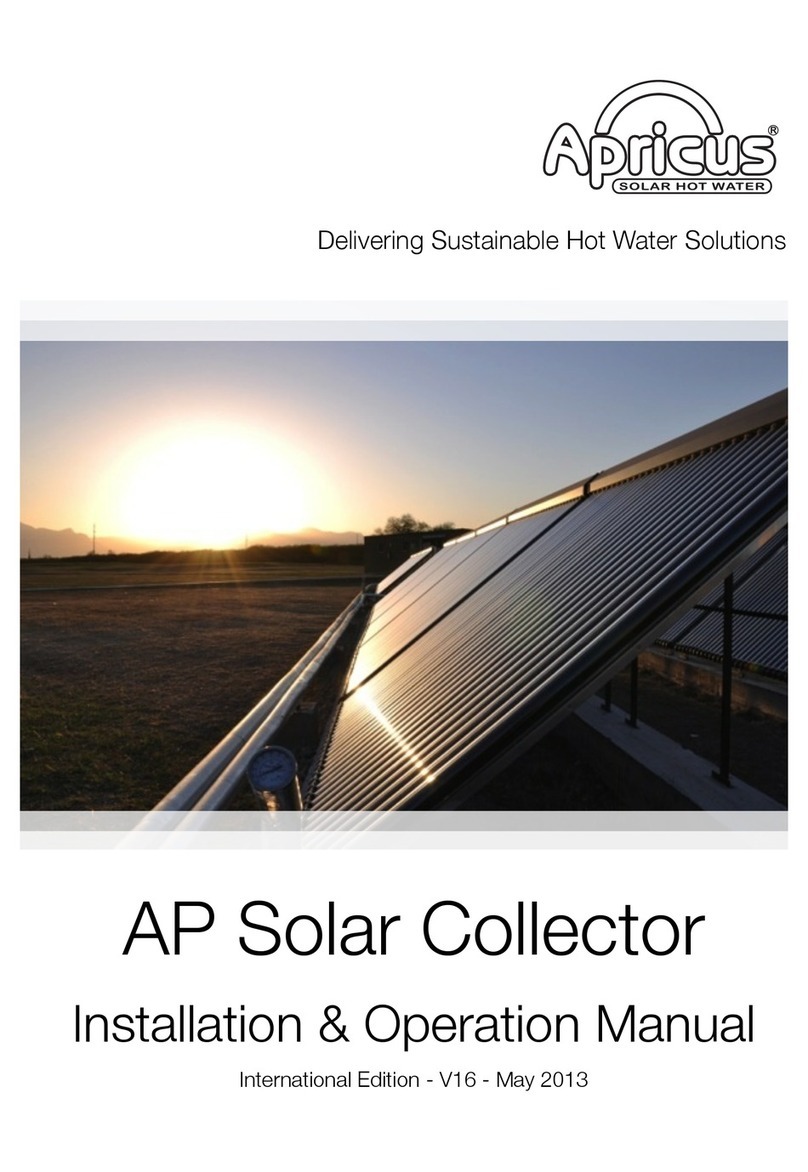1. Important Information!3"................................................................................................................
1.1. Scope of Manual!3............................................................................................................................................
1.2. Local Standards!3.............................................................................................................................................
1.3. Authorised Person(s)!3......................................................................................................................................
1.4. Component Materials!3.....................................................................................................................................
1.5. Collector Specifications!4..................................................................................................................................
2. Transport, Unpacking and Inspection!5".......................................................................................
2.1. Safe Transportation!5........................................................................................................................................
2.2. Component Lists!5............................................................................................................................................
2.3. Tube & Heat Pipe Unpacking & Inspection!5.....................................................................................................
2.4. Frame Unpacking & Inspection!5.......................................................................................................................
3. System Design!6"..........................................................................................................................
3.1. System Design!6...............................................................................................................................................
3.2. Collector Direction!6..........................................................................................................................................
3.3. Installation Angle!6............................................................................................................................................
3.4. Collector Plane!6...............................................................................................................................................
3.5. Avoid Shade!6...................................................................................................................................................
3.6. Collector and Tank Location!6...........................................................................................................................
3.8. Heat Transfer Fluids!7........................................................................................................................................
3.9. Solar Controller Settings!7.................................................................................................................................
3.10. Correct System Sizing!7..................................................................................................................................
3.11. Stagnation and Overheating!7.........................................................................................................................
3.12. Pressure and Temperature Control and Relief!8...............................................................................................
3.13. Freeze protection!8.........................................................................................................................................
3.14. Wind Loading!9...............................................................................................................................................
3.15. Snow Load!9..................................................................................................................................................
3.16. Hail Resistance!9............................................................................................................................................
3.17. Lightning!9......................................................................................................................................................
4. Collector Mounting!10"..................................................................................................................
4.1. Frame Material!10.............................................................................................................................................
4.2. Roof Attachment Strength!10............................................................................................................................
4.3. Galvanic Reaction!10........................................................................................................................................
4.4. Installation Planning!10......................................................................................................................................
4.5. Frame Assembly Process!10.............................................................................................................................
4.6. Frame Attachment Points!10.............................................................................................................................
4.7. Frame Front Track & Leg Spacing!11................................................................................................................
4.8. Standard Frame Overview!12............................................................................................................................
4.9. Angled Frame!13...............................................................................................................................................
4.10. Frame Attachment Option (Roof Rails)!14........................................................................................................
4.11. Frame Attachment Option (U Feet)!15.............................................................................................................
4.12. Frame Option (Leg Extensions)!16...................................................................................................................
4.13. Mounting Frame Leg Length & Feet Spacing!17..............................................................................................
4.14. Mounting Frame (Depth & Height Dimensions)!18...........................................................................................
4.15. Wall Mounting!19............................................................................................................................................
4.16. Manifold Attachment!20..................................................................................................................................
4.17. Bottom Track Attachment!20..........................................................................................................................
5. Piping Connection!21"...................................................................................................................
5.1. Collector Connection to Plumbing!21................................................................................................................
5.2. Pipe Size and Flow Rates!21.............................................................................................................................
5.3. Flow Rate & Temperature Rise!22.....................................................................................................................
5.4. Pressure Drop Curve!22....................................................................................................................................
5.5. Pump Selection!22............................................................................................................................................
5.6. Pipe Insulation!23..............................................................................................................................................
5.7. System Filling & Air Purge!23.............................................................................................................................
6. Evacuated Tube Installation!24"....................................................................................................
6.1. Tube & Heat Pipe Preparation!24......................................................................................................................
6.2. Tube & Heat Pipe Insertion!24...........................................................................................................................
6.3. Post Installation Cleaning!25.............................................................................................................................
7. Temperature Sensor Installation!25"..............................................................................................
7.1. Temperature Sensors!25...................................................................................................................................
8. Post Installation Check!26"...........................................................................................................
9. Maintenance!27"............................................................................................................................
9.1. Cleaning!27.......................................................................................................................................................
9.2. Other Components!27......................................................................................................................................
9.3. Broken Tube Replacement!27...........................................................................................................................
9.4. Insulation!27......................................................................................................................................................
9.5. Draining the Collector!28...................................................................................................................................
9.6. Other Components!28......................................................................................................................................
10. Troubleshooting!29".....................................................................................................................
11. Disclaimer!30"..............................................................................................................................
12. Manufacturer’s Limited Warranty!31"..........................................................................................
13. Installation Record Form!32.......................................................................................................






























